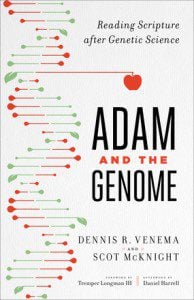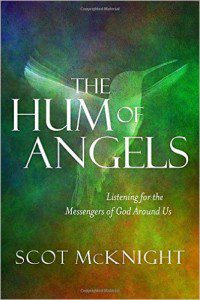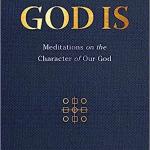If you care about the Great Lakes, read this fun set of facts.
Using the “parkway” (between curb and sidewalk) for gardening. How about donating this space for the good of others?
The L.A. City Council voted Wednesday to approve new parkway guidelines that will outline what residents are allowed to plant in that small space between the curb and street.
The city attorney can now prepare draft revisions on existing guidelines, and the Bureau of Street Services will have to provide an expanded list of acceptable fruit or nut-bearing trees for the space within 90 days.
Although these new requirements appear to be more lax, the city is shifting liability to the property owner. Basically, Angelenos can plant at their own risk. For more, read the report to the city council below.
Under the new guidelines, property owners and residents can plant whatever “shrub and groundcover plant materials” they want without having to obtain the necessary permits (which could cost hundreds of dollars). And residents will be able to plant select fruit and nut trees as well – a list of the acceptable trees has not been drafted.
The public will still have to follow city codes and right-of-way rules, but if someone does trip and fall, the city won’t be liable. Plantings are not allowed to restrict sidewalk access, or the ability of people to open their car doors. There are also maximum height restrictions so drivers and pedestrians can see what’s ahead of them. And non-edible plants must be drought-tolerant or drought-resistant.
An inside story of mental illness and its impact on everyone around.
Jack Levison, on July 4, remembers his dad:
Recently, Jack Levison, a Seattle-based writer, was sifting through his father’s letters from World War II when he found one dated July 4, 1944. Seventy years after his war-hero dad wrote that letter, Levison is sharing its moving contents with the world.
On July 4th, 1944, my dad was a 19-year-old in aerial gunnery school in Lincoln, Nebraska. His mother, Conceptione Immaculata Capitolo (herfriends and family called her Tina, thank goodness) was an indomitable, five-foot tall (in heels) Italian immigrant who had made her way to New York through Ellis Island when she was a young girl. Now her son was training to become a front gunner in B24s that flew over her childhood home in the Italian countryside, across the Alps, on bombing missions over southern Germany.
On the Fourth of July, 1944, my father wrote to his mother:
A bundle of photos and facts about America’s first churches that are still in use.
For nearly a century, “reality” has been a murky concept. The laws of quantum physics seem to suggest that particles spend much of their time in a ghostly state, lacking even basic properties such as a definite location and instead existing everywhere and nowhere at once. Only when a particle is measured does it suddenly materialize, appearing to pick its position as if by a roll of the dice.
This idea that nature is inherently probabilistic — that particles have no hard properties, only likelihoods, until they are observed — is directly implied by the standard equations of quantum mechanics. But now a set of surprising experiments with fluids has revived old skepticism about that worldview. The bizarre results are fueling interest in an almost forgotten version of quantum mechanics, one that never gave up the idea of a single, concrete reality….
To some researchers, the experiments suggest that quantum objects are as definite as droplets, and that they too are guided by pilot waves — in this case, fluid-like undulations in space and time. These arguments have injected new life into a deterministic (as opposed to probabilistic) theory of the microscopic world first proposed, and rejected, at the birth of quantum mechanics.
“This is a classical system that exhibits behavior that people previously thought was exclusive to the quantum realm, and we can say why,” said John Bush, a professor of applied mathematics at the Massachusetts Institute of Technology who has led several recent bouncing-droplet experiments. “The more things we understand and can provide a physical rationale for, the more difficult it will be to defend the ‘quantum mechanics is magic’ perspective.”…
Some physicists now disagree. “Quantum mechanics is very successful; nobody’s claiming that it’s wrong,” said Paul Milewski, a professor of mathematics at the University of Bath in England who has devised computer models of bouncing-droplet dynamics. “What we believe is that there may be, in fact, some more fundamental reason why [quantum mechanics] looks the way it does.”
Mike Anderson says he’s a “recovering True Believer.” OK, this is important; it is far more important to cry foul during the reality of Driscoll’s Mars Hill instead of after the reality.
The Civil Rights Act and the newspaper reports of that day.
Jefferson Bethke’s analogy of hipster coffee shops and young churches is worth pondering:
Because here’s the truth—if a church’s main virtue isn’t humility in line with the steps of Jesus, and suffering sacrificial love that puts others above self, then it will turn into something it wasn’t intended to be. It really doesn’t matter if you are a hip church or a more traditional church, the thing that makes it turn sideways is the spirit and posture of the people.
Like the coffee shop, we sometimes forget that one of the main missions Jesus gave us was to serve, just as He did to us. And in that, we can sometimes forget that no matter how innovative or powerful of a current move of God there is in our church or neighborhood we can never forsake those who came before us.
See the thing that really bothers me about the hipster coffee shops is when they make fun of Starbucks. They don’t realize they literally wouldn’t have a job or a coffee culture to build on without Starbucks. They should be incredibly indebted and grateful to the big green mermaid. Starbucks created the “third place” as Schultz likes to call it (not the home, not work, but the third place where community and interaction are binding). Before Starbucks, if you wanted coffee then you could go to aisle 11 at the grocery store and get it. But Coffee wasn’t an art, it wasn’t a culture, it wasn’t enjoyed like it is now without Starbucks.
The language(s) of Jesus by Seth Sanders.
srael’s Prime Minister was arguing with the Pope over what language Jesus spoke” sounds like the setup to a weird joke. Which, actually, it is. Lasting just a few seconds, the dustup reflects centuries of attempts to claim Jesus through speech and to transform his native language and original words into sacred linguistic relics.
In case you missed it, during last week’s meeting with the Pope in Jerusalem Benjamin Netanyahu asserted that Jesus’ language was Hebrew, then backpedaled quickly when the Pope corrected him, asserting that “He spoke Aramaic but he knew Hebrew.” What’s surprising isn’t so much that Netanyahu used language politically to gain territory for his side—what defines his goals better?—as the fact that any attempt to pin this first-century Judean holy man down to one language ends up concealing him and his world from us.
Hebrew as People First and Language Second
Few sacred texts confuse monolingual thinkers as badly as the Gospels, where Hebrew and Aramaic seem to be repeatedly confused. In John 20, Mary Magdalene is described as calling the resurrected Jesus “rabbuni,” which, every standard translation tells us, is Hebrew and means “teacher.” This is fascinatingly wrong. It’s actually the only time in the New Testament that an Aramaic form of the word is used; every other time Jesus is addressed with a similar term it’s the Hebrew “Rabbi.” Indeed, all the comprehensible words in John labeled “hebraisti” (translated “Hebrew”), like Golgotha, are Aramaic (the –tha ending—as in Mark’s famous talitha cumi, “rise (from the dead) o girl!”—is a giveaway).
The Greek writer of John was not using “Hebrew” (hebraisti) as a pure linguistic term, however, but as a cultural one to indicate “the speech of the Hebrews,” which points to an inextricably hybrid situation that baldly violates our later monoglot (and nationalist) ideals.
Indeed, the current debate is a mirror image of the last big public argument about Jesus’ language, when Mel Gibson’sThe Passion of the Christ had him speaking what was supposed to be Aramaic. Both views mislead us about Jewish linguistic life in the first century C.E. To the extent we can know them, the facts of that ancient life cast a surprising light on modern scholarship and nationalism alike.
















